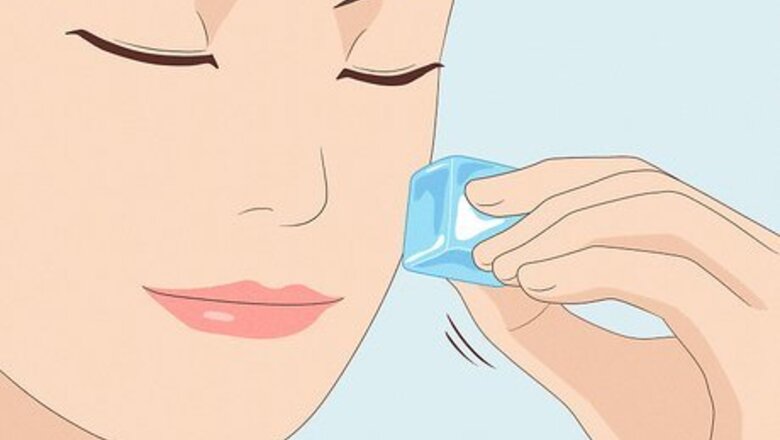
views
What is skin icing?

Skin icing is a facial treatment where you apply ice directly to your skin. Some ice facials involve rubbing an ice cube on your skin, while others involve dipping your face into a bowl of ice water. Some treatments offer general skincare benefits, while others are meant to target specific areas, like acne.
Benefits of Skin Icing

It can help your skin look less puffy. After a major injury, people often use an ice pack to help scale down the pain, swelling, and inflammation. The same logic applies to facial icing, which can help your skin look a little less puffy after you wake up in the morning. Ice packs can also help with under-eye bags. Skin icing constricts the blood vessels in your face, which helps your pores look smaller. However, these pore-shrinking effects won’t last after you take the ice off your skin.
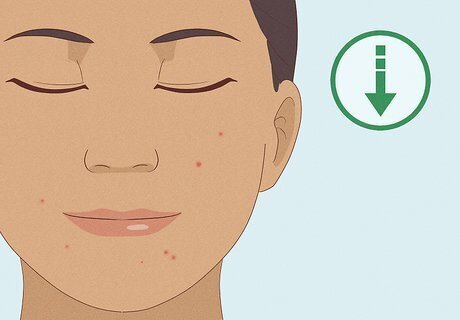
It can help prevent full-blown acne breakouts. Research shows that cold treatments (not ice facials specifically) can help lower the amount of oil your skin produces, which helps prevent major acne breakouts. It can also help acne feel less painful and swollen.

It can help skincare products soak into your skin better. Facial icing damages the skin a tiny bit, which makes the skin better able to soak up skincare products (like moisturizers).
How to Safely Ice Your Skin

Wash your face before you start icing your skin. Dip your fingers in a gentle facial cleanser and lightly massage the product into your skin. Then, rinse off all of the cleanser with a bit of lukewarm water and blot your skin dry with a towel. Washing your face ahead of time helps your ice facial be more effective.
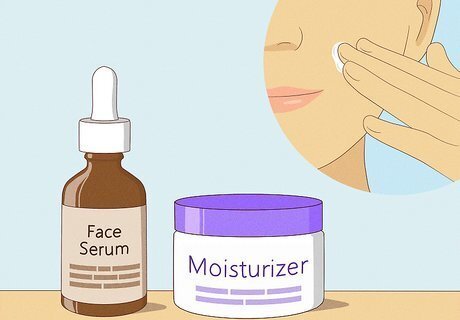
Apply skincare products beforehand if you have dry skin. Take a few minutes to apply your go-to serums, moisturizers, and creams before icing your skin. This gives your skin’s barrier a boost and helps prevent any redness and irritation from popping up during your ice facial. If you don’t have dry skin, ice your skin before applying any products (like moisturizer). The cold temperature of the ice damages your skin barrier a little bit, which helps your skincare products soak into your skin more deeply.

Wrap an ice cube in a rag and rub it over your face for 20-30 minutes. Freeze a batch of ice in an ice cube tray and wrap up a single cube in a thin washcloth or rag—this way, the ice won’t touch your skin directly. Move the ice in small circles around your face, applying it for only 10-15 seconds in each section. Keep rubbing and moving the ice around for 20-30 minutes before towel-drying your skin (or letting your skin air-dry). Always clean out your ice cube tray before using it for facial icing. Swap out traditional ice cubes with frozen aloe vera gel, rose hydrosol, green tea, or cucumber water to make your ice treatment extra nourishing. Be sure to go over your cheeks, chin, jawline, forehead, lips, and nose.

Dip your face in a bowl of ice water for 10-15 seconds as an alternative treatment. Dump a filled ice cube tray into a large bowl before adding enough cold water to fill the bowl halfway. Then, take a deep breath and stick your face in the cold water for 10-15 seconds. Pull yourself out of the water for another 10-15 seconds, and then submerge your face again. Keep sinking and lifting your face out of the water bowl in 10-15 second increments for another 5-10 cycles.
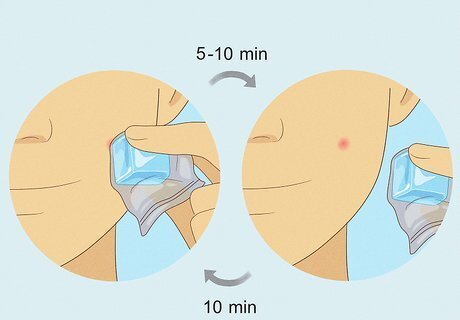
Target problem areas like acne with ice. For painful blemishes like acne, slip a single ice cube into a sealable plastic bag and press it directly on the forming pimple. Leave the ice cube in place for 5-10 minutes before taking it off your skin. Then, give your skin a 10-minute breather before applying the ice for another 5-10 minutes. Have under-eye bags? Grab an ice pack and rest it directly on top of the skin. Leave the pack in place for a few minutes before lifting it off. Never keep ice on your skin for extended periods of time—this can lead to redness and irritation (and in severe cases, frostbite).
How often should you ice your face?

Limit yourself to 1 ice facial per day. Skin icing definitely has its benefits, but it can also lead to redness and irritation. Stick to just one treatment in the morning or evening to keep your skin happy and healthy!
Debunked Myths

Ice facials don’t permanently shrink your pores. When you apply the ice to your skin, the cold temperature narrows your blood vessels—this helps your pores look smaller and less visible to the naked eye. However, your pores will expand back to their usual size as soon as you finish the ice treatment. Tip: Developing a good skincare routine, applying sunscreen regularly, and getting a chemical peel are all expert-approved ways to make your pores look smaller.
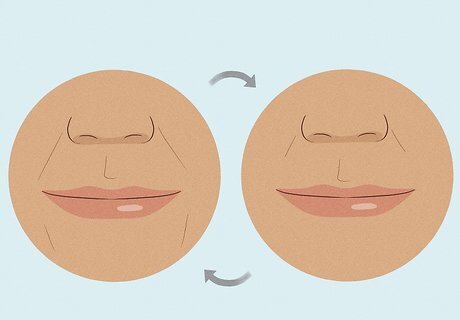
Skin icing specifically doesn’t have long-term anti-aging benefits. Research does show that cold therapy can help make fine lines and wrinkles look less obvious. However, this research doesn’t pertain to skin icing specifically. You can try facial icing and see if you notice a difference in your own skin, though, but keep in mind that the effects will likely be temporary. Tip: Look for skincare products with retinoids, ascorbic acid (Vitamin C), hydroxy acids (like AHAs), peptides, and/or coenzyme Q10 to help reduce your wrinkles.
When to Avoid Skin Icing
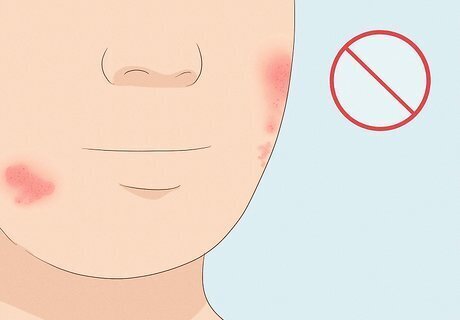
Avoid skin icing if you have thin/sensitive skin or broken capillaries. This DIY treatment can make your skin red and irritated, and it isn’t a good option if your skin is thin or sensitive to begin with. It’s also not a good option for people with broken capillaries (blood vessels that expand like a web beneath your skin). Skin icing also isn’t the best option if you have rosacea, since cold temperatures sometimes lead to flare-ups. Avoid skin icing if you’ve just had a professional facial treatment, too (like a chemical peel). Instead, let your skin heal up on its own.
Key Takeaway

Skin icing helps with redness and puffiness, but that's about it. Some TikTok creators and YouTubers love to tout skin icing as this magical treatment that can cure every skin issue in the book, but this simply isn’t the truth. Skin icing can be a helpful way to reduce redness and inflammation, but that’s all it does—it won’t make your skin less oily or anything like that. Good skincare habits are the best, most foolproof way to keep your skin looking vibrant and beautiful. Choosing the right skincare products, cleansing your face regularly, and applying sunscreen consistently are all invaluable ways to keep your skin looking great.


















Comments
0 comment